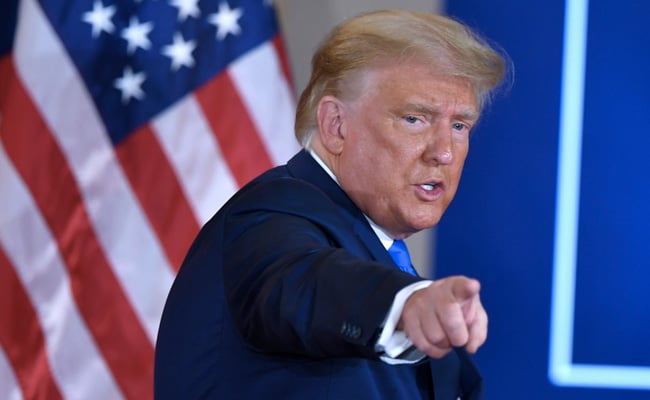OPINION: Is Trump’s America First policy globalized Monroe Doctrine 2.0?
Donald Trump’s ‘America First’ policy acts like a globalized version of the old Monroe Doctrine, called ‘Monroe Doctrine 2.0.
In 1823, President James Monroe introduced the Monroe Doctrine, a crucial U.S. policy to stop European nations from taking over or interfering with countries in the Americas. Monroe stated that new European colonies were not allowed in the Western Hemisphere and that any attempt by European powers to control or harm independent nations in this area would be a threat to the U.S. The United States promised not to get involved in European issues or their existing colonies but wanted to protect newly independent Latin American countries. At that time, Spain wanted to reclaim its old colonies, and Russia aimed to expand along North America’s Pacific coast. The U.S. couldn’t enforce the policy alone due to a weak military, but Britain supported the doctrine because it aligned with their trade interests in Latin America. Over time, the Monroe Doctrine evolved, with President Theodore Roosevelt adding the Roosevelt Corollary, which allowed U.S. intervention in Latin America to keep Europeans out. By the mid-20th century, under President Franklin D. Roosevelt, the focus shifted to cooperation and non-interference with the Good Neighbour Policy. The Monroe Doctrine remains a vital part of U.S. foreign policy and symbolizes America’s role in the Western Hemisphere.
President Donald Trump didn’t talk about the Monroe Doctrine during his 2016 campaign, but it became key to his “America First” foreign policy as president. In 2018, he brought up the doctrine in a United Nations speech, saying it was important to keep outside interference out of the Western Hemisphere. By his 2024 campaign, the Monroe Doctrine had become very important, especially to push back against China’s influence in Latin America. Many historians and experts believed that if Trump were elected again, he would focus more on the Monroe Doctrine. This would mean trying to have more control in the Western Hemisphere while reducing involvement in Europe and Asia. Hal Brands, a historian, thought Trump would give the doctrine more energy during a second term, matching his “America First” approach. James Jay Carafano from the Heritage Foundation also suggested reinvigorating the doctrine to counter foreign influence, particularly from China. Experts at Foreign Affairs and Carnegie Endowment pointed out that Trump’s policies reflected a modern take on the doctrine, trying to expand U.S. influence beyond the Western Hemisphere.
Trump’s trade policies aimed to reduce the influence of other countries and strengthen U.S. control in nearby regions. One key move was imposing 25% tariffs on goods from Mexico. He argued these tariffs would help decrease migration and stop fentanyl trafficking, but they also served to pressure Mexico to follow U.S. interests, reflecting an idea similar to the Monroe Doctrine, which emphasizes U.S. influence in the Americas. In his trade conflict with China, Trump focused on reducing China’s growing economic power in Latin America. His goal was to curb China’s influence and shift supply chains back to the Americas. To achieve this, he implemented reciprocal tariffs, including a basic 10% tariff on most Latin American countries, with higher rates for Guyana and Nicaragua. This approach was about claiming economic control in the region and showed Trump’s willingness to prioritize U.S. interests over existing free trade agreements like CAFTA-DR. Trump also used tariffs to push countries toward aligning with U.S. priorities in areas like security cooperation and trade agreements. For instance, Paraguay’s purchase of U.S. radars and Ecuador’s consideration of hosting a U.S. military base highlight how his economic measures were tied to broader geopolitical goals.
The Monroe Doctrine originally aimed to keep European powers out of the Americas, but Trump wanted it to apply worldwide. He believed some large organizations and allies were trying to weaken the U.S. or take advantage of its resources without giving enough return. Trump was sceptical of NATO and the EU because he thought Europe relied too much on American security and didn’t spend enough on their own defence. His administration wanted European countries to handle their security more, so the U.S. could reduce its role and investment in NATO. This was a significant change from the usual U.S.-Europe partnership. Trump’s interest in Greenland shows his use of the Monroe Doctrine approach. He wanted to buy Greenland to increase U.S. influence in the Arctic, where there are lots of valuable resources. This move was also meant to challenge China and Russia’s presence in the region. Although Denmark rejected the idea, Trump’s focus on Greenland aligns with the Monroe Doctrine by trying to control key areas and preventing other countries from gaining power there. In addition, his tariff actions against Europe and his efforts to strengthen the U.S. dollar show his desire to change the global economy to favour the United States.
Trump’s actions against the United States Agency for International Development (USAID) demonstrate how he applies his “America First” ideas. He targeted USAID because some argued it supported projects that hurt U.S. interests or advanced foreign agendas conflicting with his policy. By freezing foreign aid and stopping USAID activities in countries such as Pakistan, Bangladesh, and Ukraine, Trump aimed to align U.S. foreign assistance with domestic priorities. This decision also fits with Trump’s reinterpretation of the Monroe Doctrine, which he used to address perceived threats from non-state actors or certain ideologies. Critics claimed USAID funding supported initiatives associated with regime changes or left-wing agendas abroad, which Trump viewed as harmful to U.S. sovereignty and regional stability.
Donald Trump’s “America First” policy acts like a globalized version of the old Monroe Doctrine, called “Monroe Doctrine 2.0.” He used this idea to show U.S. power around the world. Trump challenged Global institutions like NATO, the EU. He decided to bypass these institutions and put tariffs on both allies and competitors of the U.S. His interest in buying Greenland showed a Monroe-like plan to control important areas to compete with China and Russia. Trump’s aim to shift supply chains more toward the Americas followed the doctrine’s focus on this region. Years, decades later another U.S President may emulate President Donald Trump’s Policies and commentators may name it America First 2.0, or Monroe Doctrine 3.0.
Disclaimer: Views expressed by writers in this section are their own and do not reflect Milli Chronicle’s point-of-view.



